 Photo by John Whelan
Troy Cooper’s
Photo by John Whelan
Troy Cooper’s
THE GRAPHIC DESIGN CODE AND RATING ADMINISTRATION* HAS RATED THIS PORTFOLIO
RATED RESPLENDENT FOR FANS OF DESIGNS
* Not an actual administration




NNS
Table of Contents
Builders
MISSION STATEMENT
BASEBALL 1





2013 BUILDER
CREDITS Published by The Apprentice School Athletic Department. Photography by Photo Services of Newport News Shipbuilding. Design by Troy Cooper Printed by Prestige Press Inc., Hampton, VA. For further information contact the Sports Information Office of The Apprentice School. Get updated athletic information on the internet at www.gobuilders.com 2 Welcome to The Apprentice School 3 Our Athletic Staff 4 Head Coaches and Support Staff 5 Medical Staff 6-7 War Memorial Stadium 8 Our Athletic Facilities 9 2013 Schedule 10-11 The Apprentice School 12-13 Apprentice Athletics 14 Head Coach Bryan Cave 15 Assistant Coaches 16-17 Senior Bios 18-19 Team Picture 20 Senior Bios 21-23 Junior Bios 24-26 Sophomore Bios 27-28 Newcomer Bios 29 Numerical Roster 30 Records & Honors 31 Series Records vs. Opponents 32-33 Tournament Schedule and Rules 34-35 Builder Invitational Past Results 36 Sponsors On the cover: Baseball Seniors look to lead Builders back to USCAA Nationals. (L-R) Chris Scarola, Devorn Lake, David Sebera.
the excellence of The Apprentice School craft training and academic programs, the goal of the Apprentice School Athletic Program is to:
the craft training, academic and leadership development of student-athletes.
a lasting attitude of leadership, discipline, sportsmanship, teamwork, ethical conduct, social responsibility and integrity.
student-athlete success in the Apprenticeship Program from start to finish and beyond in an environment that
continuous learning, professional development, career preparation, the integration of personal and professional commitments, opportunities for advancement, and the attainment of maximum performance.
In keeping with
Enhance
Stimulate
Promote
enables


NNS 2014 Annual Report
The Apprentice School 2014 Annual Report


It is worth noting that the Apprentice School’s annual report is usually a rotating project among the other designers in the department, but due the quality and efficiency of my work, they asked that I be assigned to it for two years in a row.
Editor:

Graphic Designer: Troy Cooper
Photographers:
Craftsmanship Scholarship Leadership Leadership Messages Director’s Message At-a-Glance Administration Craftsmanship Scholarship Leadership 3 5 6 8 10 22 36
Contributors: J.D. Drewry, Jim Heath, Jacob Johnston, Will Prescott, Steve Stallings and Vince Warren
April Shockley Kiehl
Professional Development Program 34 Building Careers, Shaping Futures 48
Troy Cooper, Dar Deerfield Mook, Chris Oxley, Ricky Thompson and John Whalen



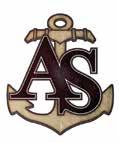


NNS 2
Leadership Messages
Newport News Shipbuilding’s Apprentice School is one of the most visible elements of Huntington Ingalls Industries’ robust workforce development strategy. While it provides opportunities for men and women to learn a variety of shipbuilding trades, as well as the important craft of leadership, it’s also a critical tool we use at HII to maintain a pipeline of skilled employees in Virginia. I’m proud of The Apprentice School’s rich history at Newport News Shipbuilding and excited about the role it will continue to play as we position HII for the future.
_Mike Petters, President and CEO Huntington Ingalls Industries




At Newport News Shipbuilding, our talented and highly-skilled workforce continue to be our company’s greatest strength. The Apprentice School serves as our leadership academy, providing a first-class education while attracting the best and brightest talent. This highly-competitive school develops the world’s finest shipbuilders and our company’s future leaders. Today, three vice presidents on my staff are proud Apprentice School graduates, and 44 percent of our production leadership team also hold this distinction. The investments we have made and will continue to make in our students and in the school itself are charting the course for another 129 years of success.
_Matt Mulherin, President Newport News Shipbuilding

For close to a century, The Apprentice School has provided its students with a wide range of opportunities in craft specialization and academics as well as the unparalleled opportunity to work alongside and learn from America’s best shipbuilders. As a graduate of The Apprentice School Class of 1978, I know first-hand how The Apprentice School has enabled my career. Starting out as a painter and working my way through leadership roles across the shipyard was made possible because of the knowledge, skills and pride of workmanship I attained from The Apprentice School. Today, as we celebrate the graduation of our 10,000th apprentice, we believe the opportunities for our students to excel and prosper have never been greater.
_Ray Bagley, Vice President, Trades Operations Newport News Shipbuilding




3


NNS The Apprentice School 4101 Washington Avenue Newport News, VA 23607 www.as.edu www.gobuilders.com Accredited by the Accrediting Commission of the Council on Occupational Education www.council.org


2013 Annual Report
The Apprentice School 2013 Annual Report

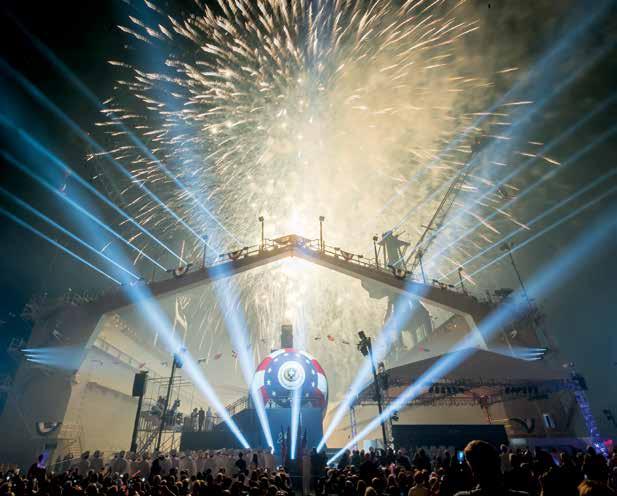



NNS
Craftsmanship | Scholarship | Leadership Leadership Messages Director’s Message At-a-Glance Administration Craftsmanship Scholarship Leadership
Contributors | J.D. Drewry, Jim Heath, Jacob Johnston, Will Prescott and Vince Warren Editor April Shockley Kiehl
Graphic Designer Troy Cooper
2 5 6 8 10 22 30 Alumni Highlights 28 Frontline FAST 42 New Facility 44 2
Photographers | Troy Cooper Chris Oxley Ricky Thompson and John Whalen
Leadership Messages


Newport News Shipbuilding’s Apprentice School is one of the most visible elements of Huntington Ingalls Industries’ robust workforce development strategy. While it provides opportunities for men and women to learn a variety of shipbuilding trades, as well as the important craft of leadership, it’s also a critical tool we use at HII to maintain a pipeline of skilled employees in Virginia. I’m proud of The Apprentice School’s rich history at Newport News Shipbuilding and excited about the role it will continue to play as we position HII for the future.
_Mike Petters, President and CEO Huntington Ingalls Industries


At Newport News Shipbuilding, our talented and highly-skilled workforce continue to be our company’s greatest strength. The Apprentice School serves as our leadership academy, providing a first-class education while attracting the best and brightest talent. This highly-competitive school develops the world’s finest shipbuilders and our company’s future leaders. Today, three vice presidents on my staff are proud Apprentice School graduates, and 44 percent of our production leadership team also hold this distinction. The investments we have made and will continue to make in our students and in the school itself are charting the course for another 129 years of success.
_Matt Mulherin, President Newport News Shipbuilding
For close to a century, The Apprentice School has provided its students with a wide range of opportunities in craft specialization and academics as well as the unparalleled opportunity to work alongside and learn from America’s best shipbuilders. As a graduate of The Apprentice School Class of 1978, I know first-hand how The Apprentice School has enabled my career. Starting out as a painter and working my way through leadership roles across the shipyard was made possible because of the knowledge, skills and pride of workmanship I attained from The Apprentice School. Today, as we celebrate the graduation of our 10,000th apprentice, we believe the opportunities for our students to excel and prosper have never been greater.
 _Ray Bagley, Vice President, Trades Operations Newport News Shipbuilding
_Ray Bagley, Vice President, Trades Operations Newport News Shipbuilding





3
NNS thanks you for 23 years of outstanding service in your second career providing SUBSAFE certification for 22 Navy submarines
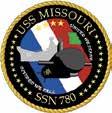

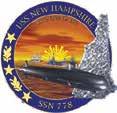
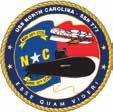
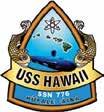

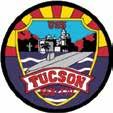

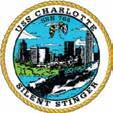


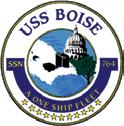
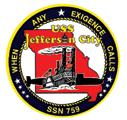


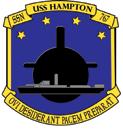
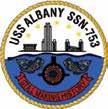
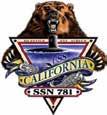


NNS
Joseph A. Wryk
NOVEMBER 11
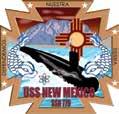


CELEBRATE VETERANS DAY




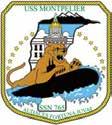

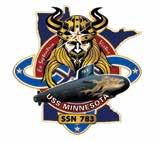
Veterans Day, formerly known as Armistice Day, was originally set as a U.S. legal holiday to honor the end of World War I, which officially took place on November 11, 1918. In legislation that was passed in 1938, November 11 was “dedicated to the cause of world peace and to be hereafter celebrated and known as ‘Armistice Day.’” As such, this new legal holiday honored World War I veterans. In 1954, after having been through both World War II and the Korean War, the 83rd U.S. Congress — at the urging of the veterans service organizations — amended the Act of 1938 by striking out the word “Armistice” and inserting the word “Veterans.” With the approval of this legislation on June 1, 1954, November 11 became a day to honor American veterans of all wars.

your submarines
This observance is endorsed by the Newport News Shipbuilding Diversity Council.

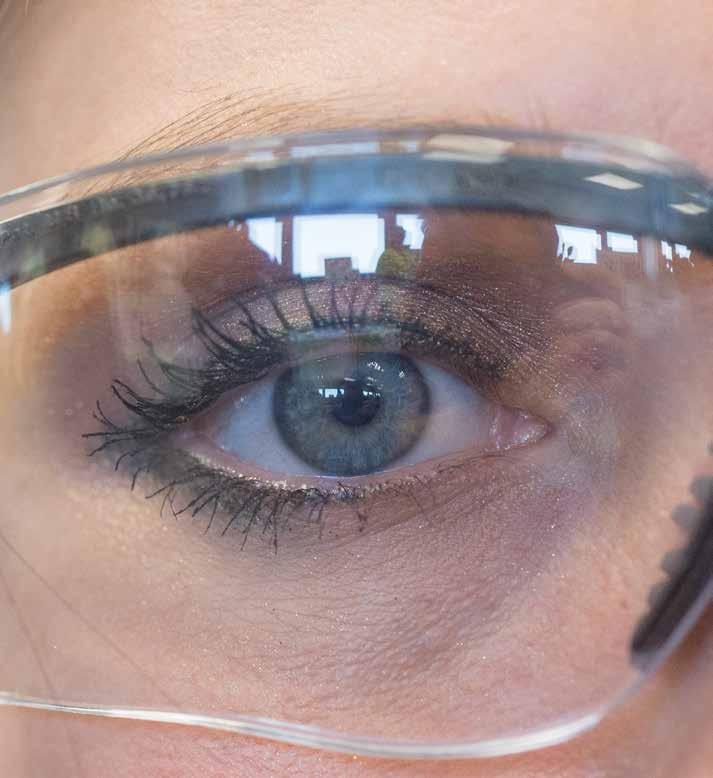
NNS
K EE PING YOUREYES SAFE
According to the Health and Safety Department, eye injuries account for roughly 11 percent of all shipyard injuries each year. Three Safety Task Team members share tips to keep your eyes safe.
• Make sure your safety glasses or goggles are properly fitted. This means there must be very little space between the lenses, side shields and your face. Glasses should firmly sit on your nose without being too tight. Safety Task Team Member Rick Collier recommends trying one of nine new types of eyewear available through the tool rooms. If you still can’t find a pair that fits, contact Safety.
• Lean forward when removing hoods, hats, glasses, etc. “It prevents the debris from falling into your eyes,” said Structural Welder Tim Watkins

• Be aware of your surroundings. “If you’re welding with a bulkhead behind you, the sparks can bounce off that and back to you,” said Watkins.

• Use Parker’s™ Perfect anti-fogging spray to reduce fog. Fitter Darryl Dildy believes that eye injuries occur more often during the summer because of the heat. “When people sweat, their glasses fog up, making it hard to see. And when they take them off they wipe their eyes, causing debris to get in,” said Dildy.
• Report it now. If you get debris or a foreign object in your eye, immediately report it to the clinic. “If you don’t go to the clinic right away, the injury may become worse overnight,” said Collier. If you miss your ride home, the company will provide a ride home at no charge.
“It doesn’t take much to get hurt if you’re not careful” said Watkins. “When you prepare yourself with the right protection and practices you will be less likely to sustain an injury.” I By Rehn
West
SuffolK siege of
23 DAys of Turmoil
The Civil War Comes to suffolk
Henry H. Ingalls was a young farmer from South Chelmsford, Massachusetts, who joined the 6th Massachusetts Infantry for a nine-month period. He spent that entire service in Suffolk, and he recorded his impressions of soldier life during that time. His diary contained a pocket calendar and two pieces of Confederate money.



Sunday, April 12, 1863
The Siege of Suffolk


Pvt. Henry Ingalls of the Sixth Massachusetts Infantry was posted with his regiment somewhere in what is today the Saratoga neighborhood of Suffolk. From his position, he would have been facing south along the Somerton Road, today’s Carolina Road. He wrote in his diary, “Last night was an anxious night for me. We were called up at an early hour expecting an attack. Rebs are in force on our right. Quite still today. Am on picket tonight.”
During this day, Gen. Longstreet’s Confederates fanned out into positions halfway around Suffolk. The left end of the line was anchored at Hill’s Point, at the site of the present Nansemond River Golf Course. From there it extended along
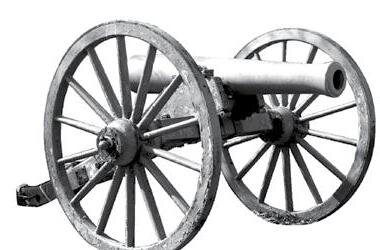


Godwin Boulevard Road, to Kenyon Road (then called and ended at the Road, which was few weeks, the nearly 30 miles Among the Campaign were war. Gen. John side of Suffolk. the Confederate Tecumseh Sherman. movie Gone With Gen. George

12 Siege of Suffolk
The 150Th AnniversAry
SNH
By Kermit hobbs A special project of the Suffolk News-Herald, Suffolk Living and the Suffolk Nansemond Historical Society Price $9.95
Rebel line, and he would gain fame just a few months later for his brigade’s famous charge at Gettysburg. In Suffolk he became somewhat infamous for his nighttime rides all the way around Suffolk to Barber’s Crossroads, near Chuckatuck, to visit his sweetheart, Miss Sally Corbell, whom he later married.

During the previous months, Union Gen. Peck had endured quite a bit of criticism from the men in his command. He had busied his troops, along with former slaves who had come to Suffolk for protection, in building a massive ring of earthwork defenses around the town.
Soldiers had often complained that they had “joined the army to fight, not to dig.” But now Peck had been vindicated. The men under his command could feel relatively secure within their formidable defensive lines.
Suffolk
Boulevard to Elephant’s Fork, along Murphy’s Mill Kenyon Road, along Turlington Road, across Carolina called Somerton Road), eventually to Badger Road, the edge of the Dismal Swamp on White Marsh was then known as Edenton Road. During the next 23,000 troops of Longstreet’s force would erect miles of earthwork defenses along those lines.
Confederate generals involved in the Suffolk were two who would become famous later in the John Bell Hood commanded the line along the north Suffolk. He would gain fame later as the commander of Confederate forces in Atlanta, facing Union Gen. William Sherman. This confrontation was portrayed in the With The Wind.
George Pickett commanded the southern portion of the








Still, there was the general belief that Longstreet would attack soon. Peck, always the cautious one, was still concerned about the two unfinished forts on the east side of Suffolk. He feared that Longstreet’s army would cross the Nansemond River and attack him in those positions. Just days previously, he had sent several Union regiments to erect defenses on the east side of the Nansemond River to resist a crossing attempt. But now that Rebels were facing him on three sides, he got cold feet. He recalled most of those regiments and set them to work finishing Fort Jericho and Fort Halleck on the east side of Suffolk. So far, he had not been threatened from that direction. Even though the Confederate line did not completely encircle the town of Suffolk, the Federals named this event “The Siege of Suffolk.”
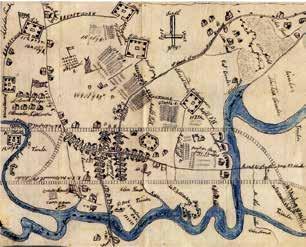
Siege of Suffolk 13
This map of Suffolk was drawn by Private Orrin S. Allen of the 112th New York Infantry and is on display in Riddick’s Folly.
General John Bell Hood
General George Pickett
Kermit Hobbs
riddicK’s Folly

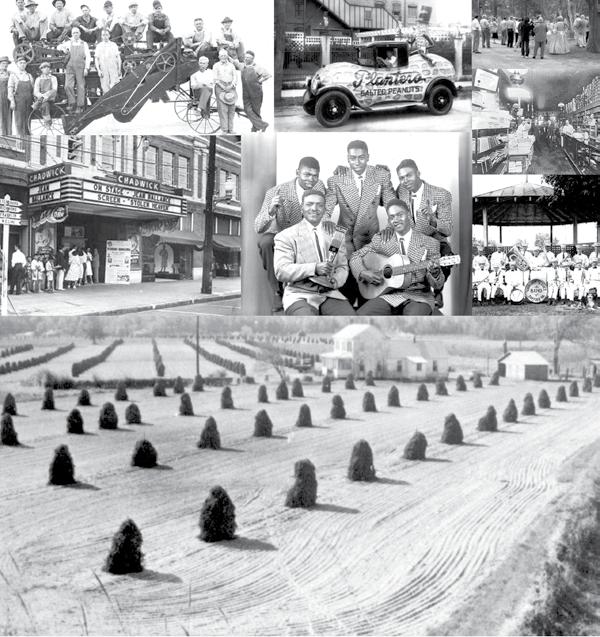

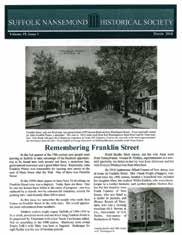
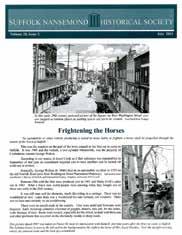

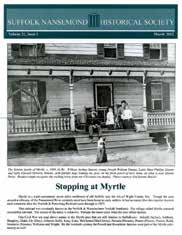


Suffolk Nansemond Historical Society P.O. Box 1255 Suffolk, VA 23439 www.suffolkhistory.org The Phillips-Dawson House 137 Bank Street Suffolk, VA 23434 Phone 757-539-2781 The Seaboard Railroad Station Museum 326 North Main Street Suffolk, VA 23434 Phone: 757-923-4750 A Home for LocAL History A suffoLk LAndmArk PHilliPS-DAwSON HOuSe SeABOARD RAilROAD STATiON MuSeuM Suffolk NaNSemoNd HiStorical Society SNH


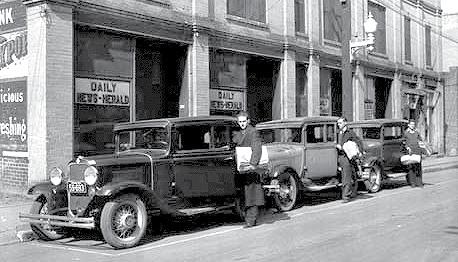

Making headlines for 140 years Suffolk’s source for news and information. 130 South Saratoga St. • Suffolk, VA 23434 suffolknewsherald.com • 757.539.3437 Follow us on Facebook & Twitter


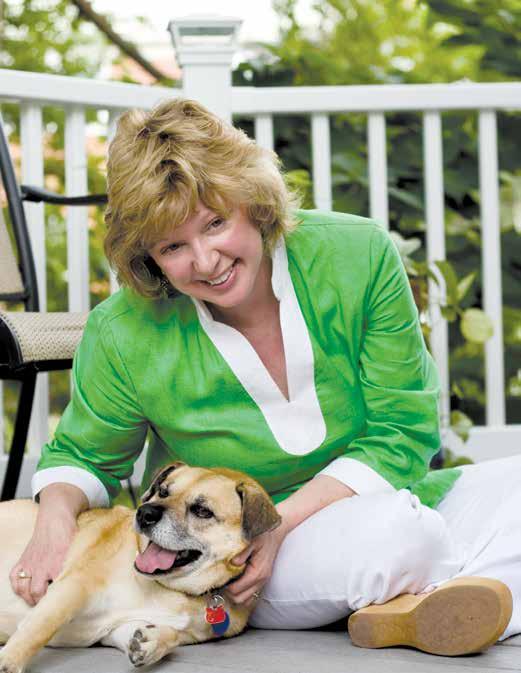
september/ october 2012 vol. 3, no. 5 suffolklivingmag.com powwow Trac T ors, a T ribe and a canoe ride july/august suffolklivingmag.com SNH


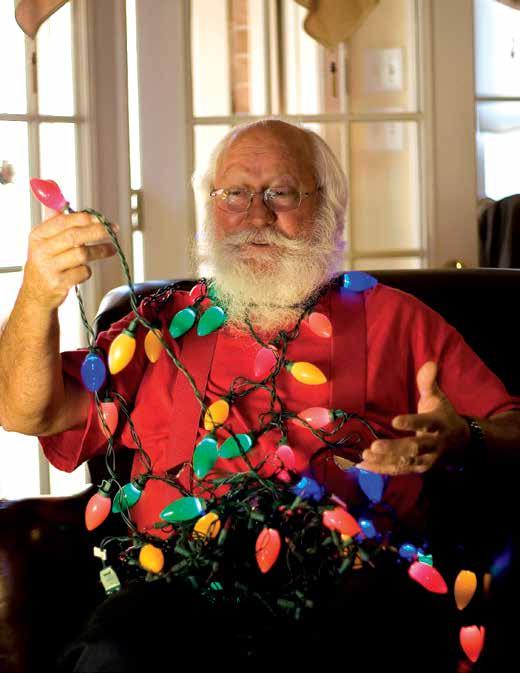
july/august 2012 • vol. 3, no. 4 suffolk summer markets, mutts and remote control planes november/december 2011 • vol. 2, no. 5 suffolklivingmag.com Santa’S Day off PLus, Ho L iday food, f ootba LL and a festiva L of L ig H ts



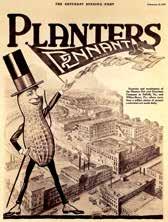





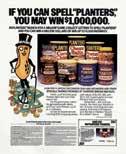
suffolk living 37 36 suffolk living 1919 1927 1949 1957 through the years Mr. Peanut 1964 2005 2010 1984 Mr. Peanut, the iconic legume who represents Planters, hasn’t always been the spokesnut for the company. The dapper nut was born in Suffolk nearly a century ago when a schoolboy named Antonio Gentile, who lived in Suffolk’s Hall Place neighborhood, won a contest in 1916 to design a mascot for the company. A professional artist added the top hat, monocle, cane and gloves to make Mr. Peanut more gentlemanly. Now, he is one of the most recognizable marketing icons in the world. In the ‘50s, Planters Cocktail Peanuts were advertised as the essential party snack (left). In the ‘80s, customers who ate enough peanuts may have been lucky enough to win $1 million if they could find the containers that spelled “Planters” (below). More recent advertisements (bottom) have focused on the peanut’s nutritional value, portraying peanuts as a hearthealthy snack that provides vital nutrients. Mr. Peanut received a makeover last year that included a new look and a voice. MR. PEANUT® and PLANTERS® are registered trademarks of Kraft Foods Inc. and are used with permission. The illustration at left shows Mr. Peanut’s evolution through the years. In earlier years, Planters Peanuts advertising focused on the peanut’s cultural value and inexpensiveness. Advertisements in the 1920s portrayed a bag of salted peanuts as “The Nickel Lunch” (above).
totaled carnage
Popular event puts bragging rights — and heavy metal — on the line
There are two schools of thought when it comes to choosing the perfect car for a demolition derby. The first, and perhaps more obvious, is to get the cheapest, most readily available set of wheels to be found on the theory that it will be all but worthless by the time the event is over.


There are those, however, who hold to the idea that a greater investment is required. Either way, don’t expect to get the car insured, and don’t make any plans that require it to be driven away at the end of the night.
One of Suffolk’s favorite annual events is the demolition derby that takes place during the city’s annual Peanut Festival in October. The bleachers fill up well before the evening event, and folks line up a dozen deep around the orange plastic fence that marks the safety zone around the field of battle. Spectators come from all over the area, and participants come from places all over Virginia and beyond.
They’re all there for the same reasons — to revel in the din of crunching metal and

Repairs are part of the strategy during the demolition derby. And, like the derby itself, the repairs that keep vehicles in the running from one heat to the next are loud, dirty and reliant on brute force.

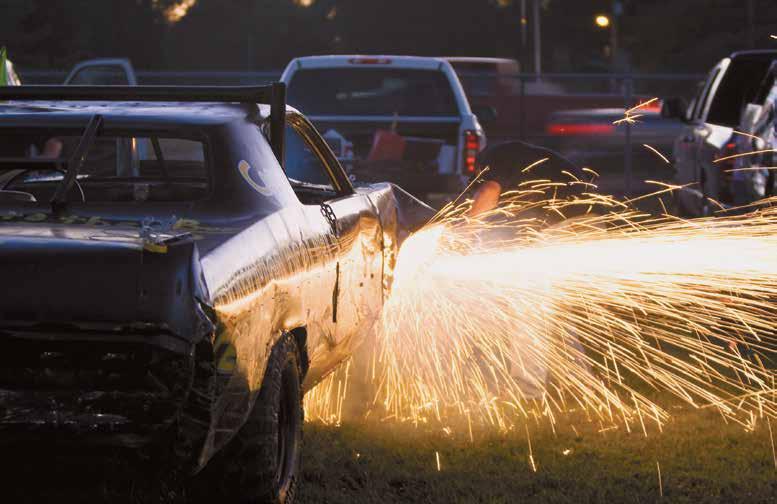
“It’s just the thrill of getting out there and smacking everybody and getting smacked. When they drop the green flag, there’s gonna be a whole lot of hittin’.”
GreG Lafferty — Derby Driver
story and photography by R.E. Spears III
See DERBY
page 28 SNH


suffolk living 57
a walk down bank street
Back in 1967, the Suffolk-Nansemond Historical Society asked 84-yearold Marie Woodward to record her memories of Bank Street at the turn of the 20th century. She recorded an audiotape for the organization, and in 2006 that tape was transcribed. The text was put together with photos from various collections, and the booklet “We Are the Poorer for Their Passing: Miss Marie Remembers Bank Street” was then published by the Society. Bank Street took its name from the Farmers Bank of Nansemond, which faced it from Main Street. It was developed not for banks, though, but to expand the available sites for


homes as Suffolk began to grow after the Civil War. Some of Suffolk’s grandest homes were built on Bank Street, and some of those homes still exist there today.
Step back in time now and have a look at the people and places of Bank Street at the turn of the 20th century.
Copies of the Historical Society’s publication are available today at the Dawson House, the circa 1880 home at 137 Bank St. that now serves as the Historical Society’s headquarters, or at the Suffolk Railroad Museum book shop. They may also be ordered by calling 923-4750.
— R.E. Spears III, editor

Bank Street in 1907 (background image) had more trees, but many of the homes that were there then are still there today. One that still exists is the Truitt House, the house with the columns in the photo at left. The William Jones House stood on the corner of Bank and Pinner streets, where three friends stood for the center photo, which comes from the Lehman Collection. Bank Street took its name from the original Farmers Bank of Nansemond building, at right.


56 suffolk living
All imAges courtesy of the suffolk-NANsemoNd historicAl society SNH
A History



The Suffolk News-Herald presents a new series exploring how North Suffolk came to be.
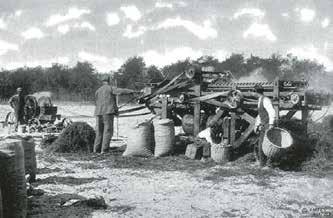








Na N semo N d cou N ty
IN
SNH
SuNday edITIoNS
ity of s uffolk A History




The Suffolk News-Herald presents a new series exploring how North Suffolk came to be.





cou N ty
d
SUNDAY
COMING
‘HeArt-StoppiNg’ how Suffolk reacted to 9/11 attacks

was located in Suffolk, sent a team of personnel to New York on Thursday. At Suffolk’s schools, some students watched the attacks unfold on television, while others were not told about the situation.
At Mount Zion Elementary School, Sandra Witcher, then the principal, placed the school in “Code Yellow Lockdown,” with entrance and classroom doors locked. Older children were getting information about the attacks from their teachers, and a handful of concerned parents picked their children up and took them home.
At Forest Glen Middle School, then-principal Kevin Alston, now an assistant superintendent, tried to keep the information from the impressionable students. “We don’t want to create a hysteria,” he told the newspaper. Several parents had called to request their children not be allowed to watch the attacks on television. Alston locked the entrance doors and spent most of the day in the courtyard, watching traffic coming and going.
At Nansemond-Suffolk Academy, the upper school held a moment of silence for the victims of the attacks. At First Baptist Christian School, younger
students were told only that “something bad” had happened, but older children were allowed to watch a half-hour of news coverage and then discuss it with their teachers.
That evening, Sentara Healthcare’s Nightingale air ambulance got a military escort from two fighter jets when it headed to the Suffolk airport to pick up a patient injured in Gates County, N.C. All air traffic had been grounded for the day, and special permission from Washington was needed to fly. According to the report at the time, the military had not received the information about Nightingale’s flight quickly enough, so it scrambled the jets to intercept the copter as a precaution.
The faith community responded to the attacks en masse. Churches including Southside Baptist Church, Suffolk Christian Church and St. Mary of the Presentation Catholic Church held services that night. West End Baptist Church opened its sanctuary until dark for prayer.
Several downtown church pastors met Wednesday morning in The Downtowner restaurant to plan an interdenominational service, held on Friday at Suffolk Christian. More than 300 people packed into the sanctuary, and six local pastors took turns in
the pulpit. City officials were also invited.
“We can’t ask for revenge, Father, but we know that you know how best to handle the situation,” Councilman Leroy Bennett prayed at the service. The Suffolk News-Herald printed its first “extra” edition since the assassination of President John F. Kennedy in 1963. At that time, the paper subscribed to the Associated Press wire copy service. The extra edition carried stories from the AP and was on the streets by 2 p.m., while reporters worked all day to get the local reaction.
The headline on Sept. 12 read simply, “TERROR!”
The paper carried photos of local firefighters and retail employees watching the attacks on small televisions in their workplaces.
On Sept. 13, the editorial was headlined, “Illusion of security is gone forever.”

A guest column by the Rev. Michael Halley, pastor of Suffolk Christian Church, advised readers to grieve, pray and remember that vengeance belongs to the Lord.
“May God bless our nation; may God bless our leaders; may God bless all the families touched by this terrible tragedy,” he wrote.
— Compiled by Tracy Agnew, news editor
Shuttle Challenger explosion.
In 2001, with live video of a commercial airliner crashing into the South Tower of the World Trade Center in Manhattan, while smoke poured from the North Tower in the wake of an earlier attack, one of the defining moments of a new generation would become burned into the collective consciousness of the world. It wasn’t just the nation that changed as a result of the events of Sept. 11, 2001; the lives of Americans who watched the horrors of that day will never be the same. We asked our readers to tell us what they remember about the day and to share how it changed them. Here is how a few of them replied.
‘How could he have hit such a big building?’
I was a Staff Sergeant in the Army at the time, and I was stationed at Fort Bliss, Texas. was working at William Beaumont Army Medical Center at the time, and I was coming in to work that moment. I remember walking into the office and the television was on, with two other soldiers watching what appeared to be a burning building to me at first glance.
I asked, “What happened?” One of the soldiers said a plane flew into one of the World Trade Center buildings. I thought that the pilot must have
made a big mistake. But how could he have hit such a big building?
A few minutes went by, and I noticed an object in the television screen coming in from the right, and it hit the other building. We all looked at each other and realized that this was no accident. We were under attack. The hospital, within what seemed like 10 minutes, was shut down, and armed soldiers were running down the hall with weapons to secure the stairs, elevators and hallways.
I knew that my life as a soldier would change from that very moment. was soon preparing to deploy within a month. Curtis O. JOrdAn
‘Such sadness and heartbreak’
My husband was active duty in the Army, stationed in the Washington, D.C. area. We were living in Waldorf, Md.
My husband was in the DIA building across the Potomac from the Pentagon that day. He watched the Pentagon from across the way when their building was evacuated. My girls were in school. was at home watching the news. My neighbor came over, because her husband was in the Pentagon area, as well. We were both very relieved when we finally heard that they were both OK. Reaction was disbelief, horror, worry about where my husband was, since he could not call until later in the day, fear for the people and families affected, fear for the people in the planes and buildings. Fear for where or what they would hit next.
I know a small fraction of the terror caused, as we were in D.C. on 9-11. know the uncertainty and fear it was to have my hus-
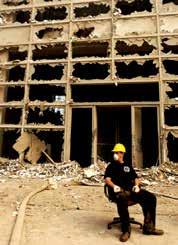

band somewhere between the Pentagon and DIA that day. I know the fear, panic and sadness of knowing planes with innocent people in them were being targeted at more innocent people on land. And I knew the fear that they were targeting the D.C. area, specifically. I also know the comfort of having friends from around the military call that day to make sure all was OK with us.
I remember driving by the Pentagon in the days and weeks after 9-11 — such sadness and heartbreak for those who lost loved ones. This day changed us as a nation. And it left me with a realization that there are people out there who do not want to “be friends” or to coexist. There are people out there whose lives are unwaveringly dedicated to our destruction as a Christian nation. KAthiE stuCKEy
‘We could have been a target.’
I was working on a Nuclear Submarine at NNSY. I was locked in — no one in and no one out of the facility. My children were right across the waterway. We had three nuclear submarines there — we could have been a target.
I watched the towers go down, and I heard our sirens. The thought of not seeing or being able to be with my children during those first few hours was horrific. AmAndA LE Gh
CArPEntEr-WALtErs
‘When the world stopped’
Here is a poem I wrote in the days following 9/11. I was 25 years old and was a first-year teacher in Georgia. This is my
reflection on the day.
My Generation
I am one of the youngest members of Generation X.
I was just a baby during the Camp David Accords.
I do not remember when President Reagan was shot. The Iran Contra Hearings are a vague memory that I did not understand at the time. I was 9 when the Challenger exploded. I was watching MTV when it happened. I was 13 at the start of Desert Storm, and no one I knew was directly involved. I did not see how it affected me. I was in high school when Waco happened. It seemed so far away. I was 19 when the Murrah building was destroyed. I was shocked, but wrapped up in college life. was 23 during Columbine. I wondered what was happening in our schools.
Today I am 25. am a daughter. am a sister. I am a wife. I am a
CMYK PAGE 2B SUNDAY, SEPTEMBER 11, 2011 www.SUffOlkNEwShERAlD.cOM 5:45 a.m. — Hijackers pass security screening Hijackers Mohammed Atta and Abdulaziz al-Omari pass through security at Portland International Jetport in Maine. They board a shuttle flight to Boston’s Logan International Airport, where they connect to Los Angeles-bound American Airlines Flight 11. Atta will pilot Flight 11 on its lethal course into the North Tower of the World Trade Center. Omari and four other hijackers physically subdue passengers and crew so that Atta can breach the cockpit and kill or disable the two American Airlines pilots. Over the next hour and a half, seventeen other hijackers clear security checks at Logan Airport, Newark International Airport, and Washington Dulles Airport. All presumably carry knives, box cutters or other concealed weapons on their person or in carryon luggage. Although eight are randomly tagged for additional screening and a gate agent flags two as suspicious, none are prevented from boarding their intended flights. 7:59 a.m. — American Airlines Flight 11 takes off from Logan Airport in Boston, Mass., 14 minutes behind its scheduled departure, with 76 passengers, 11 crewmembers and five hijackers aboard. The Los Angeles-bound flight is stocked with 76,400 pounds of fuel for its transcontinental run. Al Qaeda terrorists hijack the plane at approximately 8:14 am and reroute it towards Manhattan, using the Hudson River as a navigational guide. 8:14 a.m. — United Airlines Flight 175, bound for Los Angeles, takes off from Logan Airport in Boston, Mass., also 14 minutes behind its scheduled departure, with 51 passengers, nine crewmembers, and five hijackers aboard. Al Qaeda terrorists hijack the plane at approximately 8:45 am and reroute it toward Manhattan. 8:19 a.m. — American Flight 11 Crew Contact Airline Veteran flight attendants Betty Ong and Madeline “Amy” Sweeney alert ground personnel to the hijacking of Flight 11. They stay on the line for almost the entire duration of the flight after its seizure by the terrorists, relaying key details about the attack, such as the hijackers’ seat numbers, and report that the crew is unable to contact the cockpit. American Airlines alerts the FBI. According to Sweeney, the crew attends to the safety of the passengers, reseating first class travelers and providing medical care to those injured in the hijacking. 8:20 a.m. — Flight 77 Takes Off American Airlines Flight 77, en route to Los Angeles, departs Washington Dulles International Airport, 10 minutes delayed. 8:20 a.m. — Atta Transmission In an attempt to communicate with Flight 11’s cabin, hijacker Mohammed Atta mistakenly contacts air traffic control. Minutes later, he makes a second unintended transmission to ground control. 8:37a.m. — Air Traffic Control Contacts the Military After hearing Atta’s transmission, air traffic controller Peter Zalewski contacts Northeast Air Defense Sector to report the hijacking. NEADS alerts Air National Guard jets located at Otis Air Force Base in Cape Cod, Mass. The pilots’ orders are to locate and tail hijacked Flight 11. 8:42 a.m. — Flight 93 Takes Off United Airlines Flight 93 departs Newark International Airport after a lengthy air traffic delay on the tarmac. Flight 93 was scheduled to leave Newark at 8 a.m. 8:46 a.m. — Crash of Flight 11 Flying the plane at 466 miles per hour, hijackers crash Flight 11 into floors 93-99, instantly killing the 92 people on board and unknown hundreds within the tower. The crash starts fires throughout the North Tower and funnels jet fuel down elevator shafts, igniting fireballs at the lobby and below-grade levels and burning anyone coming into contact with the fuel. The impact severs all three emergency stairwells, trapping the nearly 1,400 people at work from the 91st floor to the 110th floor. Bond trading firm Cantor Fitzgerald, floors 101-105, suffers the single largest loss of life, 658 employees. 8:46 a.m. — Emergency Services Mobilized The Fire Department of New York and New York Police Department dispatch units to the World Trade 9/11 Timeline Courtesy national September 11 memorial and museum ‘i don’t know, but i think we’re getting hijacked.’ — Flight attendant Betty Ong, American Flight 11 Crew For most Americans living today, Sept. 11, 2001, will go down with other pivotal events in American history as a moment defined, in part, by where they were and what they were doing when they heard that America was under attack. Previous generations had their own such moments: the attack on Pearl Harbor, President Kennedy’s assassination, the Space
teacher. I touch the future every day. For twenty-five years, I stood with my hand on my heart, recited the Pledge, sang the Star-Spangled Banner. For twenty-five years, I have said these words and not understood their significance. I watch my students roll their eyes when they are required to do the same things in the morning. September 11th, I watched the news and saw thousands of Americans die. Today, I said the Pledge and I sang the Star
imAge
into
fIlE PhOTO Attack: Smoke pours from the North (foreground) and South towers of the world Trade center in Manhattan on Sept. 11, 2001, after hijacked jetliners crashed into the building. Of about 17,400 people in the towers at the time of the attack, approximately 15,000 evacuated safely before the skyscrapers collapsed. see mEmOry, 3B see timELinE, 3B CMYK PAGE 4B SUNDAY, SEPTEMBER 11, 2011 www.SUffOlkNEwShERAlD.cOM buildings and significant loss of life. 10:03 a.m. — Crash of Flight 93 Hijackers roll Flight 93 side-toside, rapidly diving and climbing, in an attempt to knock passengers and crew off balance as they attempt to storm the cockpit. Eyewitnesses on the ground report the aircraft’s erratic flight, ending with the sound of a crash. To prevent passengers from retaking the airplane, hijackers deliberately crash Flight 93 in a field in Somerset County, Pa., killing all 40 on board. The crash site is approximately 20 minutes flying time from Washington, DC. 10:15 a.m. — The damaged section of the Pentagon’s outermost offices, known as the E Ring, collapses. No rescue workers are injured. While the rescue effort continues, many Department of Defense (DoD) employees return to work in the unaffected half of the Pentagon. 10:28 a.m. — North Tower of World Trade Center Collapses The North Tower collapses after burning for 102 minutes, killing approximately 1,400 people in the building and the surrounding area. Of the approximately 17,400 people in the North and South Towers of the World Trade Center on 9/11, approximately 15,000 people evacuated safely. All seven buildings at the World Trade Center were destroyed. 11:02 a.m. — Evacuation of Lower Manhattan New York City Mayor Rudolph Giuliani calls for the evacuation of over one million residents, workers and tourists from lower Manhattan. All of lower Manhattan south of 14th Street from the Hudson River to the East River is officially closed to all but emergency personnel, creating an area known as the “frozen zone.” Throngs of people crowd onto streets, highways, and bridges to evacuate lower Manhattan. Many walk north or across bridges to Brooklyn. 11:45 a.m. — The President’s First Televised Response President Bush orders Air Force One to land at Barksdale Air Force Base in Louisiana, where he makes his first televised remarks about the unfolding events. “The resolve of our great nation is being tested,” he says. “But make no mistake, we will show the world that we will pass this test. God bless.” 12:16 p.m. — The last commercial flight above the continental United States lands. 12:30 p.m. — Fourteen Survive the North Tower Collapse in Stairwell B Miraculously, a section of the North Tower’s stairwell B survives the building’s violent collapse, shielding 13 first responders and a civilian evacuee who are still attempting to evacuate down the stairs. Within two hours of the tower’s collapse, the first responders emerge from the debris. They direct rescuers to the civilian, Pasquale Buzzelli. 5:20 p.m. Collapse of 7 World Trade Center Building Because lower Manhattan’s waterlines have been compromised, the FDNY cannot get water to fight the flames. Adjacent to the North Tower, 7 World Trade Center had suffered significant damage in the collapse. Intense fires exacerbate structural instability, causing total collapse. There are no casualties, because the 47-story tower had been evacuated that morning. However, the fall of the building sends first responders racing away from the collapsing structure to save their own lives. 8 p.m. — Rescue Workers Locate Trapped PAPD Officers Rescuers locate PAPD Sgt. John McLoughlin and Officer William Jimeno in the debris of the World Trade Center. They free Officer Jimeno after three hours of dangerous tunneling work. Sgt. McLoughlin’s rescue takes another eight hours. Rescue operations continue throughout the night. Thousands of construction professionals, first responders, and self-dispatched volunteers converge at ground zero to search for survivors, improvising bucket brigades to remove debris. Workers will extricate the eighteenth survivor, Genelle Guzman-McMillan, from the remains of Stairwell B on the afternoon of September 12. She will be the last person rescued alive. 8:30 p.m. — President George W. Bush Addresses the Nation Back in the White House, President Bush addresses a shocked nation, praising the strength of the nation in the face of the overwhelming events. “Terrorist attacks can … shatter steel, but they cannot dent the steel of American resolve,” he says. “Today, our nation saw evil — the very worst of human nature — and we responded with the best of America. With the daring of our rescue workers, with the caring for strangers and neighbors who came to give blood and help in any way they could.” Editor’s Note: The following story was compiled from News-Herald archives of coverage after the Sept. 11, 2001 terrorist attacks. It started off like any other day. That was the first sentence of a Suffolk NewsHerald story on Sept. 12, 2001, featuring Chuckatuck native Darryl Winslow, then a Manhattan resident. He was on his way to work less than two miles from the World Trade Center when he heard a scream. By the time he got to work, he had witnessed much of the deadliest terror attack ever to take place on American soil. “It was heart-stopping,” he told the News-Herald at the time. “New York — and New Yorkers — will never be the same again.” Ten years ago today, Americans were horrified to find an ordinary Tuesday shattered by a group of terrorists. The attacks in New York, Washington, D.C. and Pennsylvania claimed nearly 3,000 lives. That Tuesday, several businesses in the city, including SunTrust and Wachovia banks, closed early. Then-City Manager Myles Standish instituted a liberal leave policy, allowing city employees to leave early without following the usual policies. The city increased security at key facilities, but didn’t reveal any more details. Then-Lt. Rick Ruppe of the Suffolk Fire Department deployed to New York that week with a rescue dog. He was part of the Urban Search and Rescue Virginia Task Force II. In the coming weeks, half a dozen more Suffolk rescue workers would go to what became known as “Ground Zero” in New York, where the World Trade Center towers had fallen. The U.S. Joint Forces Command, part of which
An
burned
memory
U.S. NAv PhOTO BY PhOTOgRAPhER S MATE 2ND clASS IM wATSON recovery efforts: A rescuer takes a break from the toil of the recovery efforts surrounded by the eerie reminder of what once was a bustling area of world commerce. The world Trade center was destroyed during a September 11, 2001, terrorist attack. 9/11 Timeline Continued from page 3b More information The Suffolk News-herald is indebted to the National September 11 Memorial and Museum for much of the information appearing in this special section. The Memorial is located at ground Zero in Manhattan, and it hosts a website filled with information about the victims and heroes of 9-11. visit www.911memorial.org to learn more. for an even more detailed account of what took place on 9-11 and about the to read the government’s final report about the attacks in New York, washington, D.c., and Pennsylvania, visit www.9-11commission.gov. Also, check out a special electronic edition of this special section, with more information, at www.suffolknewsherald.com. SNH
‘it must have been an accident.
Growing up in the shadow of the new York City skyline, i said, you always see planes flying over the city, some very low… “like that one!’’
‘little did we know ….’
By Dr. Keith M. Curran

St. Andrew PreSbyteriAn ChurCh
When I think about my past, I can remember where
I was in moments of gutwrenching national tragedy.
I was in my third-grade classroom when our principal, Mrs. Johnson, announced over the PA that President Kennedy was assassinated. I was at home watching TV when a news flash interrupted my show with the news that Martin Luther King Jr. was killed in Memphis.
I remember the sick feeling as I watched from my living room the riots at the Chicago Convention in ’68.
I was standing on the front lawn of my Titusville, Fla., church as the Challenger space shuttle roared and rumbled into the sky, until it disappeared into a cloud of smoke and flame. Another time, I got a call from Marc Richardson asking if we were OK. I asked, “Why?” He said, “There was a tornado over your house.” I raced to Driver and beat the fire depart-
ment there, and I walked the road and talked with the residents and offered our church’s help to those whose homes had been swept away moments before.
When we think about the past, are there moments you’ll never forget? I remember where I was when I heard about 9/11.
Do you?
before our eyes. We were horrified. I can’t remember much about the rest of the day, other than it was lost in a blur. Do you remember what you did that day?
Somehow, the Holy Spirit must have found an undisturbed space in my heart and nudged me to do something, because I found myself planning a community service for that evening.
We prayed Psalm 22:
changed forever.
Who knew that we’d be asked to accept a “new normal” and live with an underlying fear that shaped elections, made us all terrorist experts, colored countless sermons and left us feeling vulnerable, exposed and suspicious? But we’re people of faith, and although tears may last through the night, joy comes in the morning. It’s taken 10 years,
A Suffolk NewS-HerAld SpeciAl
9 11 2001 We remember
Nineteen terrorists. Four hijacked airplanes. 2,977 innocent lives lost. The numbers, while horrible to conceive, cannot begin to convey the wrenching emotions of that morning 10 years ago as America came under attack.
Curran
I was working in my study when Evelyn Jones phoned the office to let us know something terrible was happening. We hurried to plug in a TV set, and we watched in shock the smoke tumbling out of the first tower of the World Trade Center.
“It must have been an accident,” I said. Growing up in the shadow of the New York City skyline, I said, you always see planes flying over the city, some very low… “Like that one!”
And I pointed to the screen to prove my point, but the plane slammed into the second tower right
“My God, my God, why have you abandoned me?” we felt like saying. We read Psalm 77 and 23 and sang “There is a Balm in Gilead” and “Blessed Assurance.”
I closed with these words: “Can we depend on anything in this world? We can depend on Jesus Christ, the Son of the living God. This is our assurance.”
And little did we know in that moment that soon our nation would be listening to the prophet Joel: “Beat your plows into swords and make spears from your shovels.” Little did we know the personal cost and sacrifice we’d be asked to offer. Little did we know that our world would be

You see, we believe that with God all things are possible.
Memory: readers share their thoughts about 9/11
Continued from page 2B
both twin
when the world stops for his generation?
-Kristen Petrelli
(Sept. 13, 2001& June 2, 2004)
‘Time for a radical reversal’

Next Generation
A newlywed in the army-

Back from a one-night honeymoon
His father has shocking news-
A single bomb was dropped on Hiroshima that could end the war.
That’s where my grandfather was when the world stopped on August 6, 1945.
A high school senior
Getting ready for the senior play
An announcement comes on the loudspeaker-
The President is dead.
That’s where my father was when the world stopped on November 22, 1963.
A brand new teacher-
A month into school
A colleague whispers in my ear-
The World Trade Center and the Pentagon have been hit.
That’s where I was when the world stopped on September 11, 2001.
One moment in time
Affecting entire generations.
Events that become part of our history
Molding who we are and what we will become,
Where will my son be
A coworker arrived that morning of 9/11, freaked out from the plane screaming right above his car in its descent into the Pentagon.
At the National Association of Federal Credit Union headquarters, where I was directing government affairs at the time, I got a call from dad, Dan Frohman, known in Suffolk for organizing the first Peanut Festivals in 1975, developing what was then called the Holiday Inn and advocating for the airport.
He heard “fire” from one of his passengers as he approached La Guardia Airport. Seconds later, as he frantically looked around his twin-engine plane for the “fire,” he felt on his plane the buffeting from the collision into the World Trade Center.
Landing at the airport, he got out onto the tarmac in time to see the second collision.
The following year, the private pilots association had him represent the country urging National Airport not to close itself to private plane traffic.
Having worked for the Cato Institute, Ron Paul and now Gov. Gary Johnson, agree that Benjamin Franklin was right: If we sacrifice liberty for security, we’ll get neither.
Six of the eleven
9/11 Investigative Commissioners doubted the government’s testimony, and Homeland Security is creating a nation of paranoids looking to rat on their neighbors for “suspicious” activity. Our emails and phone calls no longer enjoy 4th Amendment privacy protections. Our overseas interventions are aggravating terrorist recruitment and bankrupting our country.
It’s time for a radical reversal of the post 9/11 police state. ChArLEs d. FrOhmAn, m.Ed. suffolk resident, 1974-1984
‘Glued to the TV’ I and my wife, Vera, had just finished a leisurely breakfast, and were reading the Suffolk News Herald and the Virginian Pilot with our after-breakfast coffee. We were both retired. She had just retired from Lakeland High School in June of 2001 and me from the Naval Supply System in 1986. It was our policy not to have the TV on for breakfast. Vera had a doctor’s appointment and headed to the garage. As she backed out the car, her car radio told her that the first plane had hit the World Trade Center. I turned on the TV, and we watched pictures of smoke coming out of a tower. Vera still had a doctor’s appointment, so she left, and I continued to watch television.
I saw the second plane hit the other tower, the third plane hit the Pentagon, and
The agencies tasked with protecting air traffic were still confused about what was happening when a hijacked airplane, American Airlines Flight 11, crashed at 466 miles per hour into floors 93-99 of the North Tower of the World Trade Center, instantly killing the people aboard and hundreds in the Manhattan office building and trapping nearly 1,400 who worked in the building from the 91st to the 110th floors. But when the world saw the second airplane, United Airlines Flight 175, enter the field of vision of television cameras that had arrived to document the disaster, they had a moment to wonder what was actually happening. And then, in the next second, as the airliner exploded into floors 77 to 85 of the South Tower at 587 miles per hour, it was clear to everyone watching that this was no accident.
The nation was under attack. And the attack would not end until the Pentagon had been targeted by another hijacked airplane and a fourth plane had crashed into the ground in Somerset County, Pa., with passengers fighting to regain control of their airliner from the terrorists who had killed flight attendants and seized the cockpit.
The assaults had cost the nation the largest loss of life ever from a hostile attack by a foreign entity on American soil.
Before the day was over, it would be clear that New York and Washington, D.C., had paid dearly. The Fire Department of New York lost 343 members of its force, the New York Police Department lost 23, the Port Authority Police Department lost 37, and the Pentagon lost 125 military and civilian personnel.
The North Tower of the World Trade Center fell after burning for 102 minutes and the South Tower after 56 minutes. With structures weakened from tens of thousands of gallons of burning jet fuel, the steel buckled in each of the buildings, bringing them down in 10 seconds of chaos, noise and terror and killing all but a miraculous few who were left inside. Again, viewers around the world saw the horror unfold on their television screens.
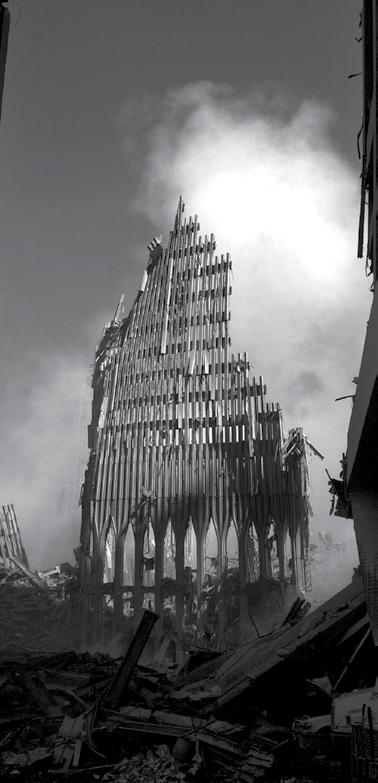
At the Pentagon, the outermost ring of offices, known as the E-Ring, suffered a similar fate, collapsing under the assault of the intense fire lit by an explosion of jet fuel when American Airlines Flight 77 had plowed into its western façade at 530 miles per hour.
As Americans watched the rescue efforts in New York and Washington, and as they began to hear the stories of passengers on United Airlines Flight 93, who had heard of the tragedies via phone calls to loved ones and voted to deny their hijackers the opportunity to complete their terrible plan — even if it cost them their lives — there were new faces to be associated with the word “hero.”
Our heroes had become the firefighters who ran up the stairs of the two towers and into what must have seemed hell itself to try to rescue people trapped by the flames. They were the passengers who rushed the cockpit of Flight 93 as blade-wielding terrorists sought to fly into Washington to destroy another high-profile target and take countless more innocent lives. They were the firefighters and paramedics and volunteers from the street who rushed to the scenes of carnage in New York and Washington in an attempt to find and rescue survivors.
Today, we remember those heroes. We mourn with the families of those who were lost. And we resolve once again that our American spirit will not be broken by those who harbor hatred for this great nation.
10 years later
CMYK
BY R.E. SPEARS III EDITOR CMYK www.SUffOlkNEwShERAlD.cOM SUNDAY, SEPTEMBER 11, 2011 PAGE 3B Center within seconds of Flight 11’s crash. On site, Port Authority Police Department officers begin evacuating the North Tower. 8:50 a.m. — President Bush is alerted while visiting an elementary school in Sarasota, Fla. 8:55 a.m. — South Tower tenants are instructed to remain in the building. 8:59 a.m. — On Board Flight 175 As hijacked Flight 175 approaches the World Trade Center, a crewmember and several passengers manage to contact loved ones and authorities on the ground. At 8:59 am, Flight 175 passenger Brian Sweeney, 29, leaves a message for his wife Julie. He then calls his mother, Louise, to report the hijacking, telling her that the passengers are considering storming the cockpit to wrest control from the hijackers. Brian began the flight in the first row of coach, but makes his calls from a GTE airphone located in one of the last rows of the plane. 9:02 a.m. — South Tower evacuation order is issued. 9:03 a.m. — Crash of Flight 175 Hijackers, flying the plane at 587 miles per hour, crash Flight 175 into floors 77 to 85 of the World Trade Center’s South Tower, instantly killing the 60 on the plane and unknown hundreds within the tower. The impact severs two of three emergency stairwells and 80 percent of the elevator cables, trapping many inside elevator cars and cutting off escape routes. Despite being choked with rubble, Stairwell A remains passable. However, only eighteen people on floors above the impact zone, floors 85 to 110, are able to successfully evacuate using this stairway. 9:05 a.m. — President Bush is alerted that a second plane has crashed into the South Tower of the World Trade Center. The Secret Service rushes President Bush back to the Sarasota airport and onto Air Force One. 9:10 a.m. — Increasing Response The NYPD calls a second Level 4 Mobilization, bringing its total deployment to 2,000 men and women. The FDNY issues a second Fifth Alarm, dispatching 235 firefighters, 20 engines and eight ladder companies. Other companies and off-duty personnel, not directly called, respond to the attacks. Within minutes of Flight 11’s crash, the FDNY raises its mobilization to the highest level. Many firefighters are already responding to the World Trade Center when hijacked Flight 175 hits the South Tower. 9:32 a.m. — Flight 93 hijacker accidentally transmits a message intended for the passengers. 9:36 a.m. — Vice President Cheney is evacuated from his White House office. 9:37 a.m. — Crash of Flight 77 Hijackers crash Flight 77 into the Pentagon’s western facade, killing the 59 people on board the plane and 125 military and civilian personnel inside the building. A hundred and six are severely injured in the ensuing fire. Loaded with 49,990 lbs of jet fuel, Flight 77 ignites an inferno inside the Pentagon. Many civilian employees and military personnel evacuate the building shortly after the impact, while others felt compelled to rush into the burning building to rescue trapped and injured colleagues. A Pentagon security camera captures the crash of Flight 77 into the building’s western facade. At the time of impact, the hijacked plane flew at 530 miles an hour. 9:42 a.m. — The Federal Aviation Authority grounds all flights over, or bound for, the continental United States. 9:45 a.m. — Throughout the morning, officials evacuate high-profile buildings, government offices, landmarks, and public spaces in response to rumors of escalating attacks.
a.m. — Fight for Flight 93 Thirteen of Flight 93’s 40 passengers and crew manage to alert loved ones and authorities to the plane’s hijacking. At least six learn about the attacks on the World Trade Center or the Pentagon. In response, Flight 93’s passengers are believed to have collectively voted to mount a counterattack against the hijackers. 9:59 a.m. — South Tower of World Trade Center Collapses After burning for 56 minutes, the South Tower collapses in 10 seconds, killing approximately 600 workers and first responders in the building and surrounding area. As the South Tower collapsed, dust and debris engulfs the streets near the World Trade Center. Many flee, seeking shelter in surrounding buildings. When the World Trade Center towers collapse, huge pieces of the steel facade fall to the earth, causing enormous damage to nearby Spangled
Today,
Today,
Today,
I
The
9:57
Banner.
I understand what those words mean.
know what it means to be an American.
I cried.
wrote the following poem a few years later as a part 2 of the above poem.
towers collapse in a cloud of smoke. There was talk of cell-phone calls to relatives from a fourth plane that had been commandeered. We stayed glued to the TV thru lunch until 2 p.m. that Tuesday. JOhn r BriGht suffolk ‘On the shoulders of heroes’ Ten years ago on a seemingly ordinary Tuesday morning, our nation and the world paused in collective horror. And on this Sunday, Sept. 11, 2011, our nation will again pause, and we will remember. We will remember those lost; we will comfort those who still mourn; we will continue to pray for peace in our nation and the world. But 9/11 is not just a memory. It is a reminder — a reminder of the strength of our communities, the resilience of our citizens, and the critical importance of maintaining strong defense and law enforcement agencies to keep us safe. And perhaps most importantly, 9/11 will always remind us that we in America are indeed blessed to stand on the shoulders of heroes. It is my fervent prayer that we will live up to their example.
4th district,
COnGrEssmAn J. rAndy FOrBEs
Virginia
Forbes 9/11 Timeline Continued from page 2b
but people are waking up and discovering that the world did not end on 9/11. God didn’t disappear in a ball of smoke, the promises we read about in the Bible weren’t deleted with one evil keystroke, and a living hope can’t be put on a watch list. Our past always colors our present and our future, but our past also includes the story of a Good Shepherd, a girl named Ruth who spoke truth to power and prophets who said that someday we’ll beat those swords into plows and spears into shovels.
— By Dr. Keith M. Curran St. Andrew Presbyterian Church fIlE PhOTO Gathering point: A T-beam that survived the collapse of the world Trade center came to be used as a gathering point for the salvage workers who spent months clearing tons of debris from the site to stop and worship. Eventually they mounted it to a concrete pedestal. It has been installed in the unfinished museum that sits on the site today. see timELinE, 4B






Athletes in the Crossfire Sponsored by the National Center for the Prevention of Community Violence solveviolence.com MEET the Director BoBBy KippEr is a Virginia native with a background in sports and public safety. Following a twenty-fiveyear law enforcement career, he served as director of Virginia’s gang reduction program. In addition, he is an active high school coach and a thirty-year veteran basketball official with the Virginia High School League. The National Center for the prevention of Community Violence can provide: KEyNoTE prEsENTATioNs WorKshop prEsENTATioNs CoNsulTATioNs TEChNiCAl supporT In the areas of gang prevention, intervention, and enforcement for all levels of athletic teams and associations We know the problems... Divided loyAlTy GANGs in sports Find the solutions to violence. Call today! 757.874.1549 let’s find the solutions. 501 (C)3 Non-profit organization LSK
WiNNiNG on the streets and winning on
ThE pliGhT of Today’s Athletes
Today’s athletes are raised playing on a different type of playground. The challenges of crime and violence in communities has infiltrated the world of sports. From professional leagues to little leagues, the stakeholders of athletics are now faced with a challenge of coaching beyond the playing field. The influence of the “gangsta” lifestyle has created a new form of aggression for our athletes on and off the field.
hoW CAN WE KEEp our AThlETEs sAFE?

hoW CAN lEAGuE oFFiCiAls AND CoAChEs rECoGNizE A plAyEr AT risK?


hoW CAN WE prEVENT ViolENCE iN sporTs?
GANGs iN sporTs
Athletes in the Crossfire
WE oFFEr:
TrAiNiNG Interactive workshops for players from youth, high school and college sports to professional athletes.
TrAiNiNG For league officials and coaches on how to identify the presence of gangs and players at risk.
EVAluATioN Are gangs a problem in your league? We have an evaluation method to assist you.
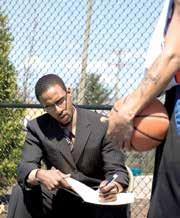


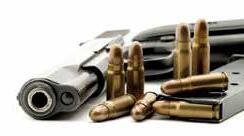
CoNsulTATioN For league officials, coaches and players on prevention, intervention and enforcement of gang-related behavior.
TEChNiCAl AssisTANCE Assistance in policy development and program evaluation.

the FiElD, for many AThlETEs, is not the same.
NO COLORS
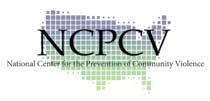
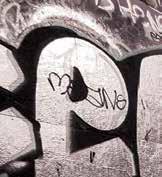




LSK
Lesson One
JUSTIN JUMPS IN
For Justin, life has been hard. His mother and father do not get along and he argues constantly with his brother and sister. Now that he has turned sixteen, he is eligible to drive, but his parents refuse to take him to get his license. He feels depressed and longs for someone to show him some respect.

Antonio has the answer for Justin. “If you want real respect, you need to hook up with my posse.” Justin and Antonio have been friends for years, but Justin has always resisted joining Antonio’s group because he does not agree with the way that they treat people. On several occasions, the group has attacked innocent people without reason. But Justin is now convinced that if he ever wants to be accepted that this is his chance.
Justin finally decides to join the “Southside Posse.” He first has to meet Chico, the group’s leader. Chico is nineteen years of age, but he hangs out with students in high school. He quit school at age sixteen, he has never held a job, and he claims that he is not worried about money. Chico believes that if he needs it, he will take it.
The stage is set and Justin is officially going to become a member of the “Southside Posse,” but first he must pass the test.

To join the group Justin will have to go through a “beat in” ceremony where several group members will physically assault him until they draw blood.
In addition, Chico has ordered that Justin join six members of the group who plan to torch a rival gang member’s house. Chico’s motto is “If you want respect, you have to pay the price.”
Lesson Two
WITH FRIENDS LIKE THESE WHO NEEDS ENEMIES?
DIVIDED LOYALTY
Dalesha is at the top of her game. She has a supportive family, good grades and she is working on a basketball scholarship to a major university. Currently, she is leading the district with a 24 point per game average. College coaches have lined up for a chance to recruit Dalesha and her future appears to be bright.
But Dalesha has a problem with selecting the wrong friends. She is currently being investigated for her role in a large fight between two female groups at a local mall. Although she claims that she is innocent, witnesses have stated that Dalesha was wearing gang attire and participated in the incident which destroyed food court furniture. Several members of a rival girl’s basketball team have evidence that Dalesha has sent messages through the internet threatening additional violence against the “southside Hood,” a known community street gang. The evidence will connect Dalesha to the “Northside Mob,” a feared gang in the north side of town.
The local police have determined that Dalesha is a key suspect in the fight and property damage and she will be arrested and charged with gang offenses later this week. Members of her basketball team have heard the news and they are concerned whether Dalesha will be playing in the upcoming Championship tournament. What will her coach say about the situation? Will this impact her ability to play in college?


 Photo by John Whelan
Troy Cooper’s
Photo by John Whelan
Troy Cooper’s























 _Ray Bagley, Vice President, Trades Operations Newport News Shipbuilding
_Ray Bagley, Vice President, Trades Operations Newport News Shipbuilding




















































































































